High volume beekeeping
Synopsis : The Spring honey harvest, heavy supers, extra supers, clearers and the space all that spare equipment occupies. You always have too much … until you run out.
Introduction
It’s usually about this point in the season that I start running out of equipment – brood boxes, supers, clearers, frames, buckets, jars {{1}} etc. Unusually, it’s not happened this year … yet. However, as I drove back home with a car bulging with weighty supers on Monday, it did make me think about the space needed for beekeeping.
Beekeeping requires quite a bit of space … both in area and height.
Is there a pastime that takes up more space?
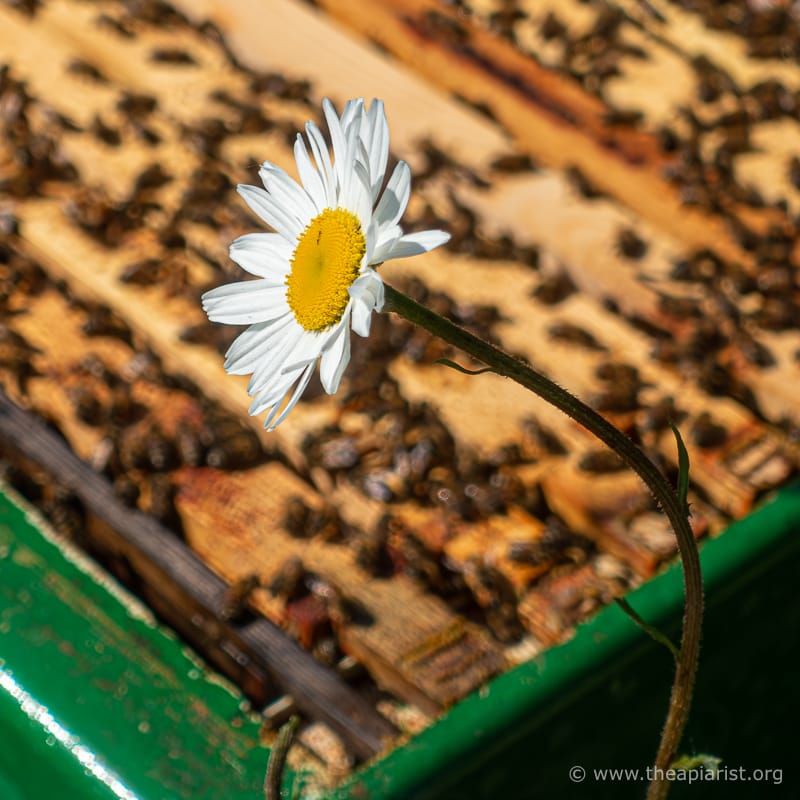
Stray ox-eye daisy (Leucanthemum vulgare) in the apiary
Hot air ballooning perhaps? But the balloon is deflated and packed away when not in use, whereas unused supers take up exactly the same amount of space as those in use. They’re just in a different location.
Furthermore, for a significant part of the year, all those supers remain in teetering stacks waiting for the nectar to start flowing. They might only get used for 3 months a year.
And what about feeders and those other items that get used for a week or two a year, or in the case of clearers, only a day or two?
Yet more space.
Boxes, boxes, boxes
The amount of extra boxes you need depends upon your location and how prolific and productive {{2}} your bees are.
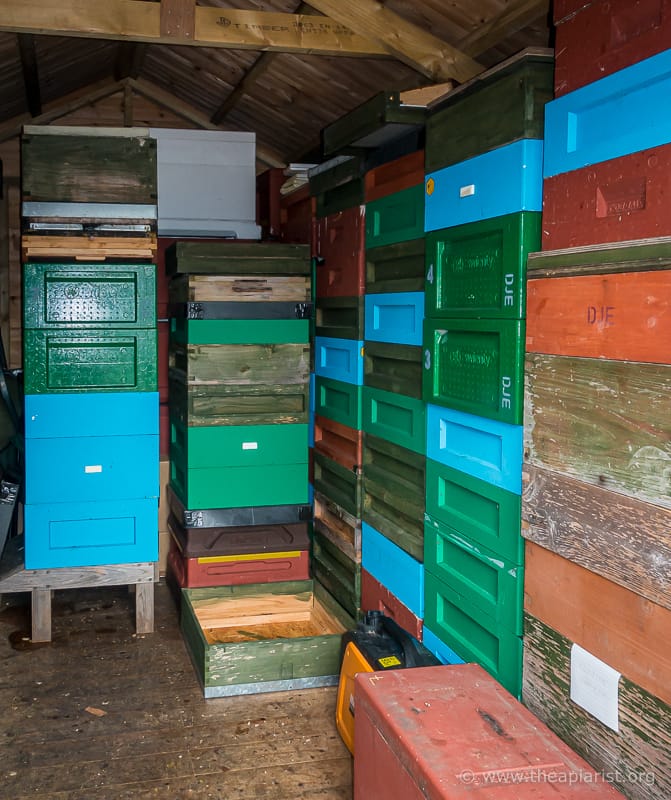
One corner of one shed … there are more
If you live in the south of England, running overflowing boxes full of prolific yellow bees, with limitless access to acres of oil seed rape, you’re going to need more boxes than someone running dark, native, bees in Caithness.
When I lived in the Midlands the majority of my colonies would probably be on double brood boxes at some point in the season. Now I’m in Scotland, it’s the exception (and I’ve got none this season). This is both location- and bee-dependent.
I favour darker bees and over the seasons have selected those that overwinter on a single brood box, are frugal with stores and that don’t necessitate me spending most of the cold months of the year at the gym in preparation for the weightlifting involved.
I’ve never used 14×12’s, largely because I already think {{3}} there’s too much choice in frame/box sizes, and one more option would just confuse/infuriate me. If I was starting again (and was physically stronger) I’d consider a single size brood/super setup, acknowledging that this probably brings its own problems when it comes to extracting.
The physical strength point is significant. I’ve just weighed some National supers prior to extracting. Depending upon how full they are and whether they’re cedar or poly, some are just over 18 kg (40 lb) … five of those on a hive is a lot of lifting.
The nectar flow
But will you need five?
Yes, even in an average area for forage, in a good season you might need up to five supers on a hive.
By the looks of things, this spring is probably going to be about average and about 20% of my production colonies have 5 supers. However, most have three, and if I averaged out the ‘supers in use per hive’ on all colonies it would probably be three.
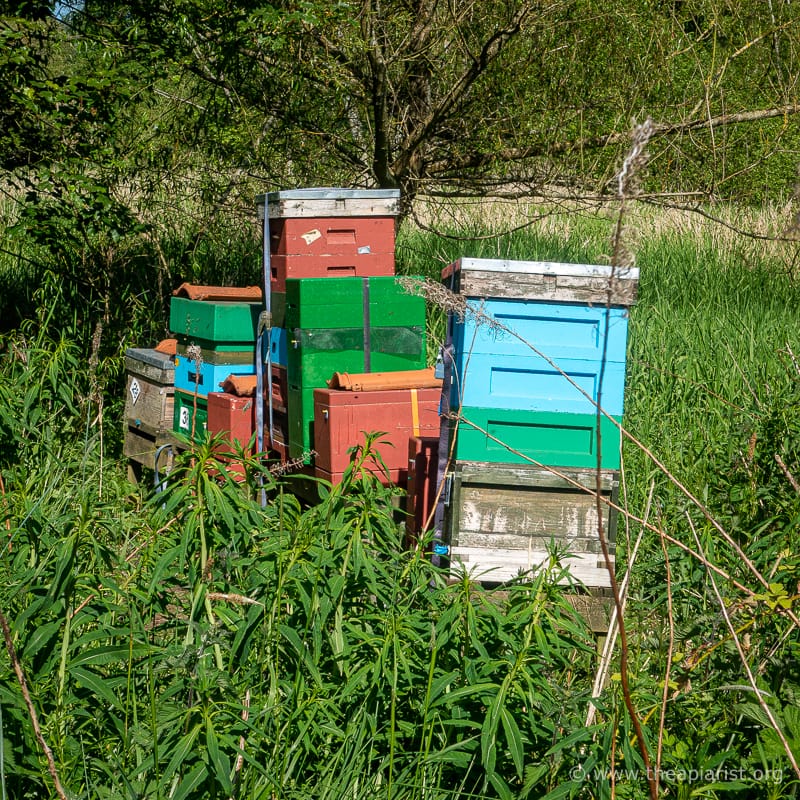
Hives and nucs in late May
If this is your first season and you bought one of the ‘brood plus two supers’ packages from Abelo or Thorne’s you’ve probably already run out of supers.
And if you didn’t this spring – perhaps because you’ve only just started with a nuc or a 2023 swarm – you might this summer, and you almost certainly will next year.
If you’re fortunate enough to keep bees in an area with abundant forage then four might be a safer bet.
All of the above assumes you keep the colony together by applying appropriate swarm prevention and control measures … you’ll need a lot fewer supers if you let half of the workforce disappear over the apiary fence 🙁 .
More generally, strong colonies will need more supers. As my beekeeping experience and ability increased (or as my inability decreased) I’ve run stronger colonies, needing more supers and collecting more honey.
Other than the nectar flow, there are a few other times when supers are used e.g. to accommodate a contact feeder or block of fondant in the autumn, but it’s rarely more than one per hive for these tasks {{4}}.
Swarm prevention and control
Supering early and adequately i.e. don’t be stingy when adding supers if the colony is expanding fast and needs more space, helps delay the urge to swarm, but is unlikely to prevent it.
In due course you will need to apply some sort of swarm control.
Many swarm control methods require an additional brood box. Some also need separate floors, roofs, and crownboards. You will therefore need appropriate numbers of these as ‘spares’.
Alternatively, if you use the nucleus method of swarm control, you should be able to prevent the loss of a swarm simply by housing the queen in a nuc box … until, of course, the nuc you split off expands sufficiently to justify its own hive.
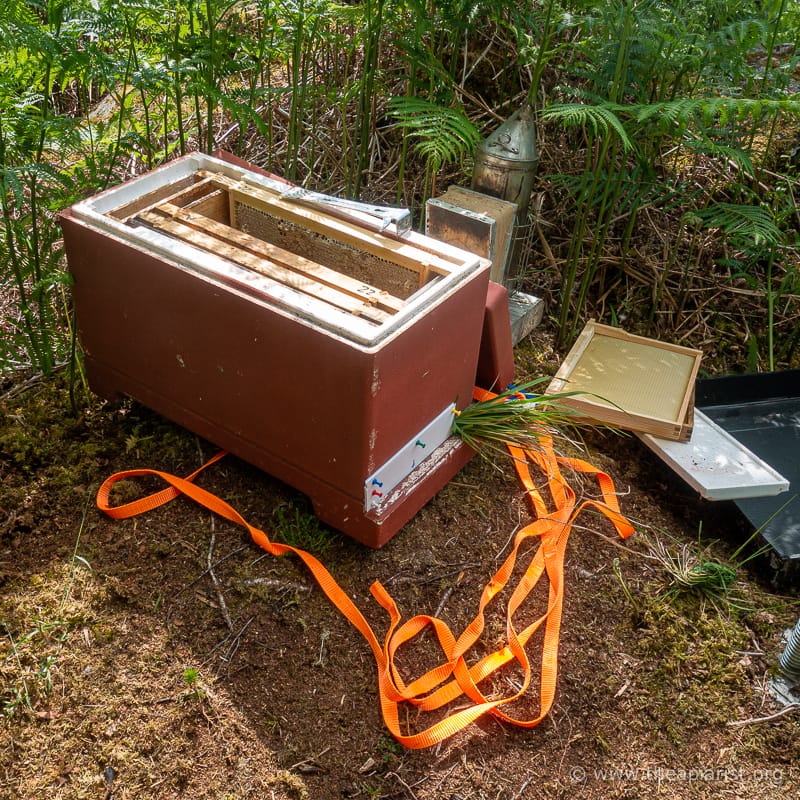
Preparing a nuc
Do not overestimate how long this takes … a two frame nuc made up with the queen laying like crazy can very rapidly outgrow a 5-6 frame nuc box. Two weeks might be all it takes … not long enough to get the new queen mated and laying (and therefore making the ‘old’ queen surplus to requirements).
So you’ll probably need more boxes 🙁 .
To delay this proliferation of hives you can periodically remove brood from the expanding nuc, perhaps using it to boost other colonies or – pooled from several nucs – to make up a queenless cell raising colony for queen rearing.
This occasional ‘weakening’ of a nuc is a useful technique to master. It’s not the sort of thing that can be done by the calendar, or learnt from a book (or website 😉 ). You need to keep the nuc strong enough to build new comb, defend itself and forage, without allowing it to run out of space and make swarm preparations. In June this will take more frequent intervention than in August when you are preparing nucs for overwintering.
Clearing supers
Other than a few specialist split boards for queen rearing, it’s the clearers I use for honey supers that probably see the smallest amount of ‘action’ doing the season. At most they are probably used for 2% of the year … about 8 days, and then really only twice overnight for each of the spring and summer honey harvest.
Twice because I’ve got about double the number of hives as clearers and/or the honey is taken off in two batches (see below).
This limited usage makes it understandable why many beekeepers use Porter escapes fitted into the appropriately-shaped holes in a crownboard. The crownboard is used at all sorts of times, and the Porter escapes can simply be stored in a small box until needed for clearing the supers.
Except they’re not a very efficient way of clearing supers.
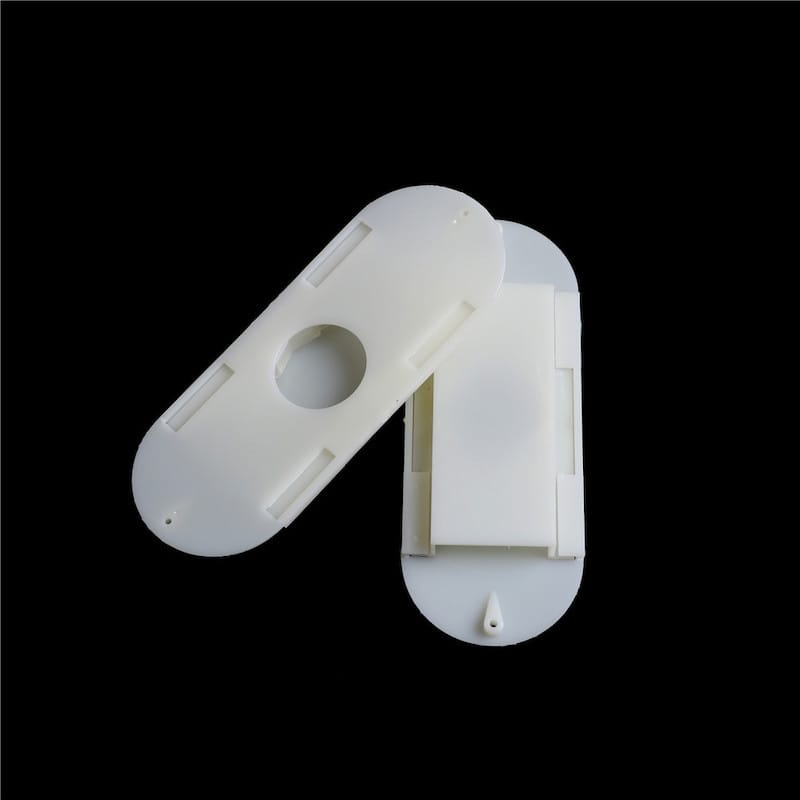
Porter bee escapes
They get gummed up with propolis or drones get stuck in them. I stopped using them many moons ago.
As an aside, here’s an interesting article in Bee Culture on the history of escapes for clearing supers.
It’s worth remembering that no clearer – however efficient – will work well if either of the two following conditions are not met:
- space for the bees to ‘escape’ down into
- a queenright brood box
The latter can be an issue if your colony swarms – or is having swarm control applied – when you’re taking off the honey. It just means you have to manually shake the remaining bees off the super frames before taking them back for extraction.
Efficient clearers
You can ensure the ‘space’ by providing an empty or part-filled super underneath the clearer for the bees to move down into. Alternatively, you could use a clearer which has an integral deep lower rim.
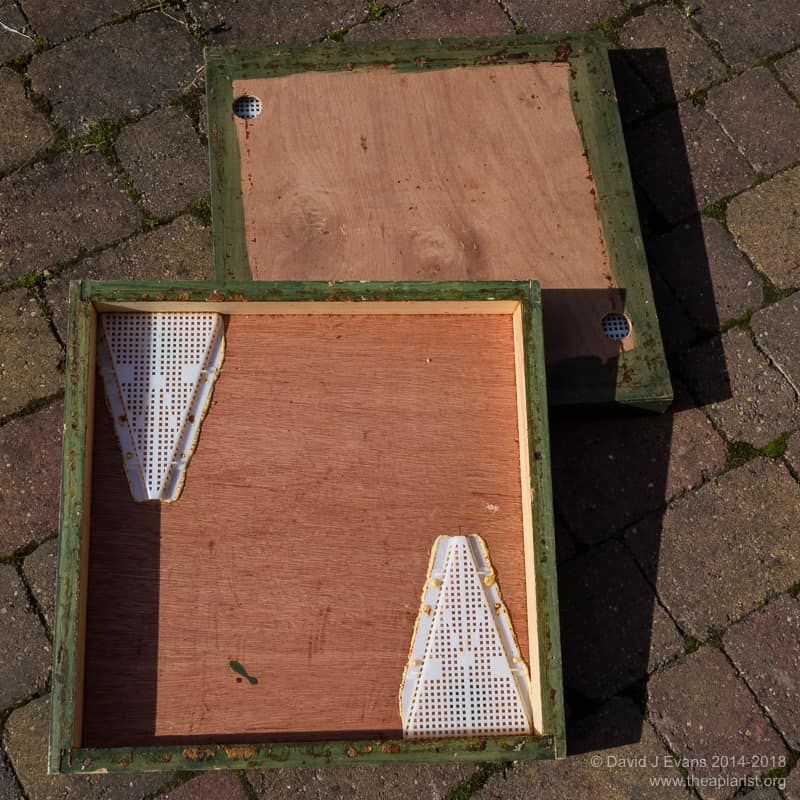
Clearer boards – note two well-spaced exits and a deep lower rim
This type work really well and will efficiently clear multiple supers quickly.
I like clearing all the hives in one apiary at the same time – after all, the honey is likely to be ready at pretty much the same time (and, in the summer, it reduces problems with robbing). Obviously that means I need the same number of clearers as there are hives in the apiary.
Some of my clearers are botched together from Correx, zip ties, gaffer tape and a standard 50 mm eke. These work just as well as one built all in wood … with the advantage that I can separate the board part from the eke part, storing the former and using the latter for other things.
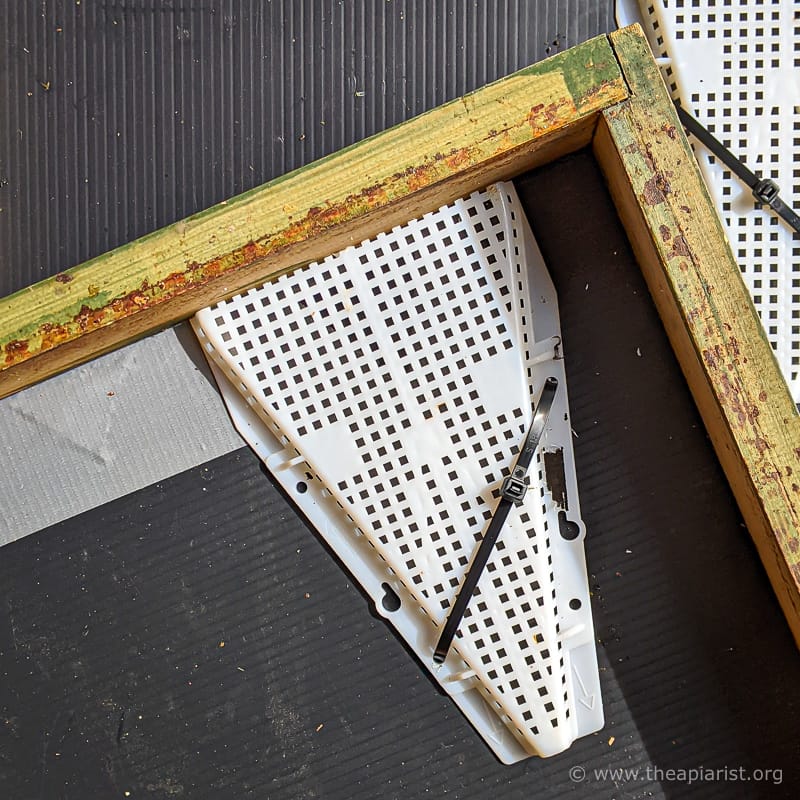
Zip tied escape on a Correx clearer board
They’re also ‘cheap as chips’ 😉 .
The spring honey harvest
The spring honey in Fife is predominantly, though not exclusively, oil seed rape.
I like to take this off as soon as it’s ready rather than risk it crystallising in the frames. Inevitably this usually means taking only a subset of the supers, or even only some of the frames from each super.
The bees tend to fill and ripen the honey in the middle frames before those at the sides of the super. Therefore it’s not unusual to find the central frames ready, whereas those on the edges are still unripe.
As part of a standard inspection {{5}} I take each super off and ’guesstimate’ its weight. In fact, the weight is irrelevant, what matters are which are the heaviest and which are the lightest … presuming that the heaviest are the ones most likely to be ready. I then reassemble the hive with the lightest at the bottom, with the clearer inserted underneath the first super I reckon is ready for harvest.
The following day I go through the bee-free supers above the clearer, checking each frame to determine whether the honey is ‘ripe and ready’.
If the super is capped then the honey is ready.
If the honey (though it’s probably technically nectar in this state) drips out of the frames it is definitely not ready.
The shake test
But in between these stages are the frames that are incompletely capped.
You can easily determine whether the honey is ready for extraction in these partially capped frames by holding the frame by the side bars and giving it a sharp shake over an upturned hive roof. If you can shake out drops of nectar the frame should probably be returned to the hive.
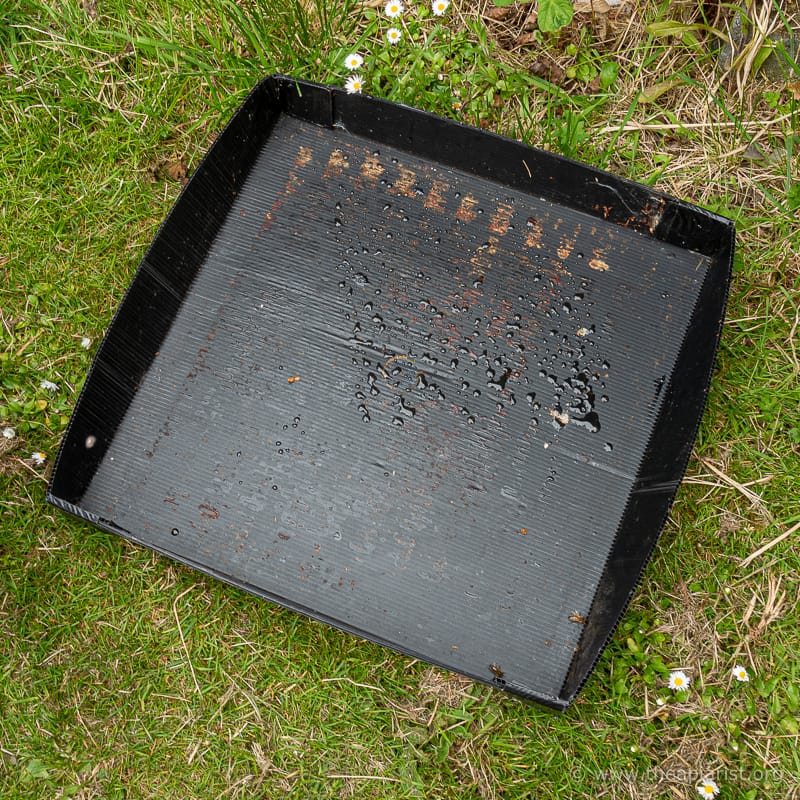
The shake test for unripe honey
Typically you’ll find the central frames of the super either all capped or certainly all ripened, with those at the sides having variable amounts of unripe nectar in them.
When I checked my hives on Monday I found a few frames in the lowest cleared super(s) were not yet ready. These were returned to the hive and should be ripe (and possibly also capped) by next week.
This ‘shake’ test is a rough and ready method of determining the water content of the nectar in the supers. If nectar can be shaken out (don’t hold back on that hard sharp snap/shake … it will only cause problems in the future) then the water content is above 20%, meaning there’s a risk that the honey will ferment in storage.
The spring OSR crop is often poorly capped but still passes the ‘shake test’ … don’t let it crystallise!
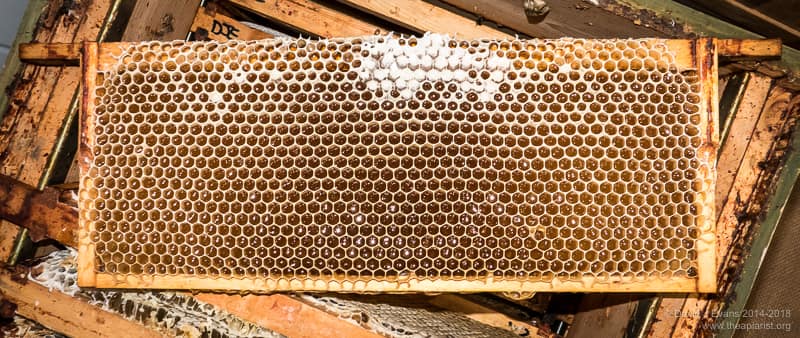
(Very) partially capped honey super frame … but ready for extraction
You can ‘dry’ honey by stacking unripe frames/supers in a room with a dehumidifier, or blowing air across them, or even simply stacking them for a few days on the honey warming cabinet. However, it’s much easier to let the bees do the work 🙂 .
Even if ‘ripe and ready’, my supers all get stacked on my honey warming cabinet set at ~38°C to make extraction more efficient.
It spins out much better if warmed.
Weighty matters
I’ve never bothered too much with the productivity of my bees.
With enough hives I seem to get enough honey {{6}}.
However, there are marked differences between the productivity of different hives and apiaries. Being vaguely scientific, rather than just thinking “Hmmm … interesting” I thought I’d try and get some real numbers to make some comparisons.
I retrieved a stack {{7}} of supers from two apiaries on Monday. Each received a gaffer tape sticker with the hive number as I removed them, subsequently annotated with the weight before extraction. Since all my supers take 9 frames – an extractor full – I’ll simply be able to re-weigh the supers after extraction to determine the honey yield.
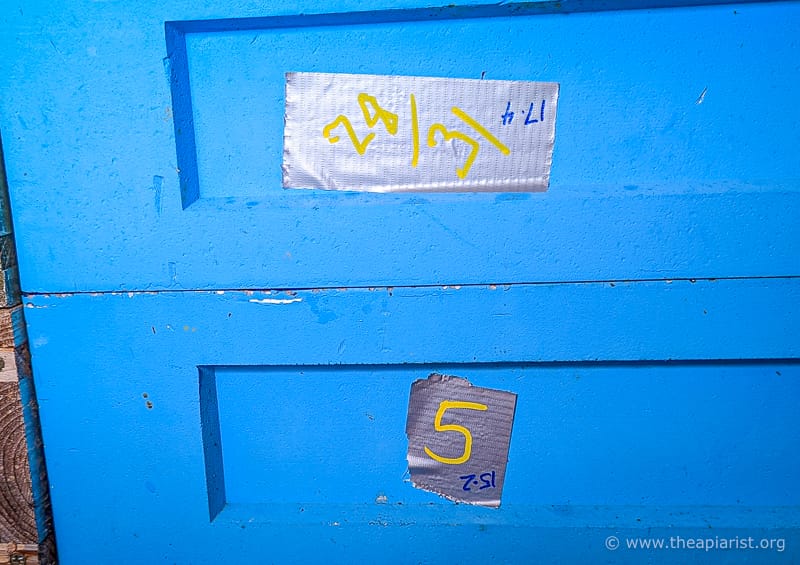
Hive numbers (queen marking pen) and super weights (written upside down)
I’ll be extracting as this post goes live, so will have to comment in the future on the weight of extracted honey and whether particular apiaries outperform others (and if this pattern is consistent for spring and summer harvests).
The extracted supers get piled up – taking yet more space – until I return them to the apiary. I’ll do this at the same time I retrieve the next batch of supers for extraction.
These richly honey-smelling supers are used to under-super {{8}} the clearer and the full supers, pretty-much ensuring that the upper honey-filled supers are effectively emptied of bees. The remaining honey dregs help the bees through any shortage of nectar in June, and they’ve got the space to start storing the summer honey if needed.
Extraction efficiency?
My extractor is radial (frames arranged likes the spokes of a wheel) which, at least for some honey, is less efficient than a tangential extractor, though much less likely to damage the frames.
My recollection is that radial extractors are about 60-70% efficient i.e. about a third of the honey remains in the frame after extraction, though I’ve no idea where I remember that number from and a quick Google search failed to turn up anything directly relevant.
Do any readers have an authoritative figure? And source?
If I’m sufficiently well organised (and remember) I might try and re-weigh some of the supers after the bees have cleared them of the honey dregs (assuming that the summer nectar flow hasn’t started) to allow me to calculate this extraction efficiency.
Or I might try a more thorough Google search … someone will have measured this 🙂 .
You’re going to need a bigger boat truck
I’m not a beefarmer. If I was I’d have a Toyota Hilux or a Unimog.

Unimog
Instead I’ve got a small hatchback.
Frankly it’s impractical and almost entirely unsuitable for beekeeping. At most I can get about 16 supers in the car … a total weight of perhaps 250 kg, equivalent to about 3 adults.
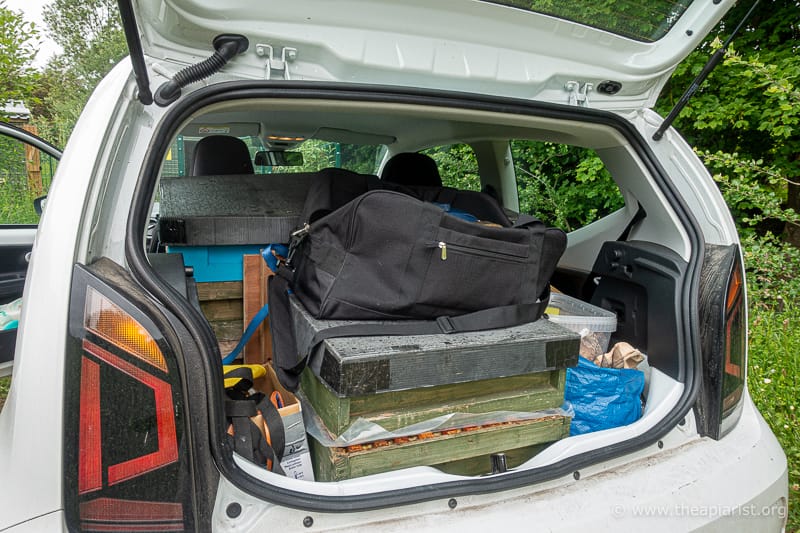
Off to the next apiary – there’s a nuc on the passenger seat!
I’d love a truck but there’s no way I could justify one. The running costs alone would bankrupt me unless I got a load more hives (so necessitating an even bigger truck 🙁 ). A Hilux gets – at best – about 33 mpg, about half what I achieve in my super-laden car.
I daren’t look at the fuel economy of a Unimog.
However, in truth, there are only about three times a year when the beekeeping volume routinely exceeds the car volume. These are the spring and summer honey harvests and when my jars are delivered from C Wynne Jones.
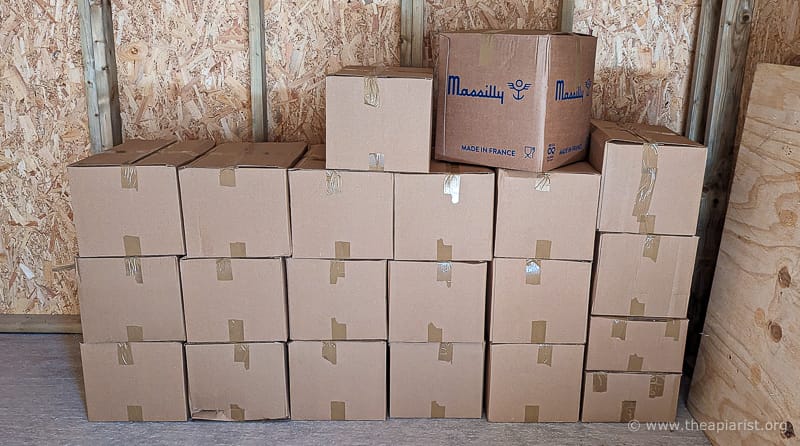
1400+ jars
If I lived somewhere other than the howling wilderness this wouldn’t be a problem. However, our drive is too long and steep for a large lorry so the driver leaves the pallet on the roadside verge and I ferry them up … yet more beekeeping things that take up a lot of space in storage.
Other high volume beekeeping activities
‘High volume’ also means that something is loud {{9}}.
Fortunately beekeeping is usually a peaceful activity.
The gentle buzz of returning foragers is hardly an intrusive sound.
A swarm winding up for takeoff sounds like a helicopter, but a rather quiet helicopter. The ‘roar’ of a queenless colony isn’t really referring to the volume of the noise
The loudest noises are usually made by the beekeeper, not the bees.
That ‘expression of surprise’ when a bee crawls under the back of your jacket and stings the unprotected small of your back, or when a clump of bees falls off the corner of the frame you’re inspecting, directly into the gap at the top of your boots.
Both can be quite loud.
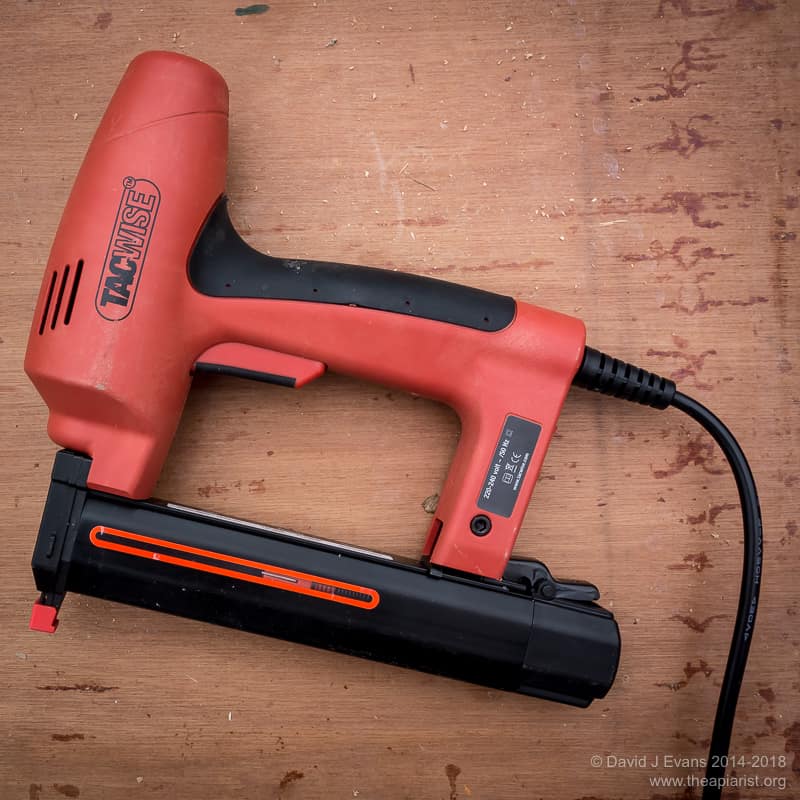
Kerchunk
Frame making can be a bit noisy. The incessant tap, tap, tap of a hammer driving in frame nails, or the sharper (and much louder) ‘kerchunk’ of a nail gun … though both are drowned out by the sound made by the beekeeper hitting his thumb, again, with a misdirected hammer blow.
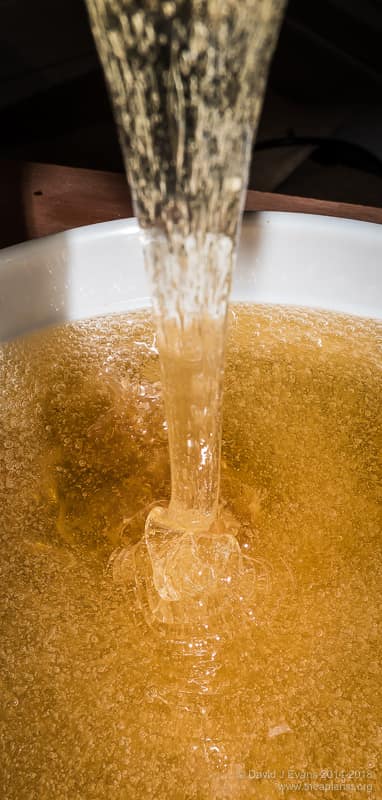
Honey extraction …
Extracting can be a noisy affair, though the noise is somehow attenuated or compensated by the sparkly, bubbly flow of golden honey from the extractor gate into the bucket. I only really notice the noise of a recklessly unbalanced extractor bouncing around the room.

The dying of the light … Rum and Eigg
However, the noisiest thing I’m aware of is the sound of 16 laden, creaking, poly supers bouncing around in a small car negotiating ~25 miles of shockingly poor singletrack roads on the remote west coast of Scotland. Despite strapping the boxes tightly together the noise is deafening … and I’ll be doing it all over again in the next couple of days.
{{1}}: As well as time.
{{2}}: Two very different things; it’s not unusual to have prolific, unproductive bees which convert everything they collect into more bees.
{{3}}: At least for me … you may relish the choice!
{{4}}: But it’s an empty one and you will need the space to store the super frames!
{{5}}: When I know most of the honey is ready.
{{6}}: That’s using my definition of enough.
{{7}}: The collective noun for supers.
{{8}}: Probably not a real term, but you know what I mean.
{{9}}: Or should that be LOUD?
Join the discussion ...